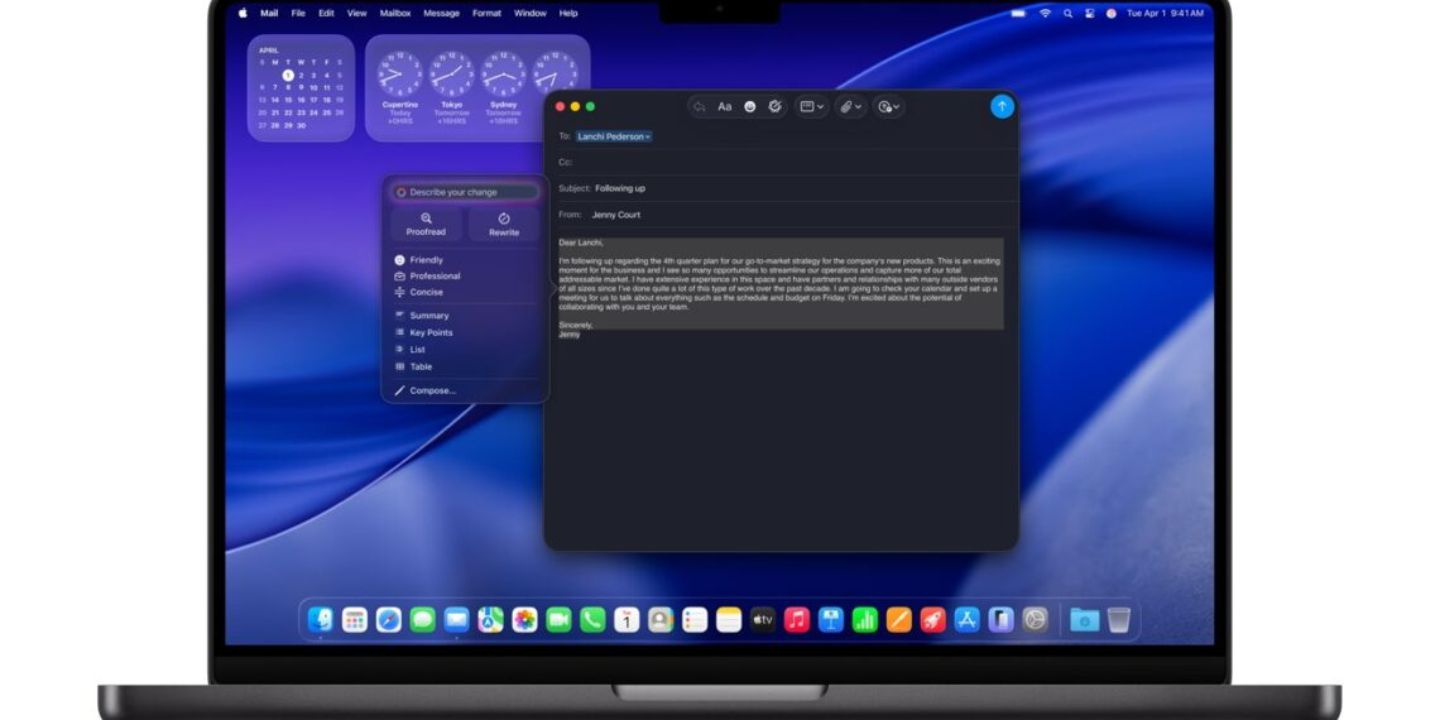Apple has just lifted the curtain on early benchmark results for the 14-inch MacBook Pro with the new M5 chip, and the numbers are already causing a stir among tech enthusiasts and professional users alike. According to Geekbench data, the M5 MacBook Pro is delivering impressive performance gains over its predecessor, the M4-based model, both in single-core and multi-core tests.
These preliminary benchmarks indicate a meaningful step forward in Apple’s laptop lineup, hinting at improved efficiency, faster workflows, and greater productivity potential for professionals. While we should interpret early results cautiously, they provide a clear signal of the capabilities of Apple’s latest silicon and what the upcoming MacBook Pro refresh promises.
Benchmark Numbers and What They Reveal
The Geekbench submission for the 14-inch M5 MacBook Pro shows the following:
- Single-core score: ~4,263
- Multi-core score: ~17,862
In comparison, the M4-based 14-inch MacBook Pro typically scores around:
- Single-core: ~3,770
- Multi-core: ~14,700
Performance Gains
- Single-core performance: ~12-13% improvement (from 3,770 → 4,263)
- Multi-core performance: ~21-25% improvement (from 14,700 → 17,862)
These are not mere incremental gains. They indicate substantial architectural improvements in the M5 chip that affect both everyday tasks and demanding professional workloads.
Why Single-Core Performance Matters
Single-core benchmarks remain highly relevant, despite the multi-core focus in modern computing. Many macOS tasks rely on a few high-performance cores, including:
- Web browsing and media consumption
- Document editing and office applications
- Light development work and app testing
The uptick in single-core scores suggests smoother performance, faster UI responsiveness, and quicker app launches. Users will likely notice a snappier feel across everyday interactions, even when performing basic computing tasks.
Multi-Core Performance: Handling Heavy Workloads
The jump in multi-core performance is even more significant, highlighting the M5’s potential for intensive workflows. This includes:
- Video editing in Final Cut Pro or Adobe Premiere
- Compiling code in Xcode or other development environments
- 3D modeling and rendering tasks
- Running multiple apps, containers, or virtual machines simultaneously
For Pro users, this increase translates into shorter processing times, more efficient multitasking, and a more productive workflow overall.
Implications for Professionals
The benchmark uplift makes the 14-inch M5 MacBook Pro an attractive option for professionals in creative and technical fields. Consider the following scenarios:
- Video Editors: Multi-core improvements can reduce render and export times.
- Software Developers: Compiling large codebases becomes faster and less cumbersome.
- 3D Artists and Designers: Rendering complex scenes in tools like Blender or Cinema 4D may see measurable performance gains.
- Power Users: Enhanced multi-core performance makes heavy multitasking smoother, even with multiple virtual machines or browser tabs open.
For those relying on the MacBook Pro for demanding professional workflows, the M5 upgrade could significantly improve efficiency and reduce wait times, reinforcing the “Pro” positioning of the device.
What These Benchmarks Suggest About the M5 MacBook Pro Lineup
Apple has already opened preorders for the 14-inch M5 MacBook Pro, priced starting at US $1,599, with general availability set for October 22, 2025. Early benchmark results hint at several strategic points regarding Apple’s product rollout:
- Staggered M5 Refresh: The M5 chip is being introduced in the 14-inch MacBook Pro ahead of other Pro/Max variants, which are expected in early 2026.
- 14-Inch as All-Rounder: The 14-inch model may serve as the sweet spot for Pro users, balancing portability with high performance.
- Upgrade Incentive: Users with older Intel, M1, or M2-based MacBook Pros may find the performance leap worth the investment, especially if they rely on multi-core workloads.
- Market Positioning: Apple continues to leverage vertical integration, designing its own silicon to differentiate laptops from PC competitors in performance and efficiency.
These benchmarks support Apple’s narrative that custom silicon is a competitive advantage, offering measurable benefits over the competition while reinforcing the MacBook Pro’s premium tier positioning.
Evaluating Whether to Upgrade
If you’re considering a 14-inch M5 MacBook Pro, here are some factors to weigh:
- Current Device Speed: Are you using an older Intel or early Apple Silicon device that feels sluggish for your workflow?
- Workload Needs: Does your daily work involve multi-core intensive tasks like video editing, coding, or 3D rendering?
- Battery and Efficiency: While the early benchmarks don’t include thermals or battery performance, Apple Silicon historically offers high efficiency, so battery life could improve as well.
- Cost Considerations: Weigh the price against performance gains. Users on recent M4 models may find upgrades less compelling.
- Full Reviews Pending: Hands-on reviews are needed to evaluate real-world performance, thermals, and sustained workloads before committing.
Benchmark numbers are a strong signal of potential but don’t replace hands-on experience or in-depth testing under daily usage conditions.
How the M5 Chip Continues Apple’s Silicon Evolution
The M5 represents a logical next step in Apple’s in-house chip development, building on the foundation laid by M1, M2, and M4:
- Improved Efficiency: Architectural improvements help balance performance and battery life, a hallmark of Apple Silicon.
- Performance Scaling: The larger single-core and multi-core gains indicate better scalability for both lightweight and heavy workloads.
- Competitive Advantage: Apple’s vertical integration allows tight synergy between hardware and software, providing optimized macOS performance.
For the MacBook Pro line, this means sustained relevance in professional computing, ensuring the brand maintains its edge over Windows and Linux alternatives in creative and enterprise markets.
Early Observations from Tech Community
Early Geekbench results are already generating discussions across forums and tech communities:
- Pro Users: Many are excited by the multi-core improvements, particularly for demanding tasks like video rendering or compiling large datasets.
- Everyday Users: Even those who use MacBooks for casual computing may notice smoother app launches and more responsive performance.
- Analysts: Tech analysts note that the single-core improvement, though smaller, is important for maintaining macOS responsiveness and snappy UI interactions.
These discussions suggest that the M5 MacBook Pro may appeal to both creative professionals and power users, while also attracting attention from enthusiasts looking for early benchmarks.
Market Impact and Anticipation
Apple’s early benchmark results play a strategic role beyond technical performance:
- Building Hype: Publishing preliminary performance numbers generates anticipation ahead of launch.
- Justifying Price Points: Performance improvements help rationalize premium pricing for the refreshed 14-inch model.
- Reinforcing the Pro Brand: Strong multi-core scores signal that Apple continues to prioritize high-end workflows, keeping the “Pro” designation relevant.
- Competitive Differentiation: By highlighting M5 gains, Apple distinguishes its MacBook Pros from rival laptops in both performance and efficiency.
The Verdict: Early M5 MacBook Pro Looks Promising
While the full picture remains incomplete without battery, thermal, and real-world usage data, the early benchmarks suggest that Apple has delivered:
- Noticeable uplift in both single-core and multi-core performance
- Improved efficiency potential due to Apple’s optimized silicon
- Stronger appeal to professionals and power users looking for a reliable and fast MacBook
For buyers already planning to purchase a Pro-level MacBook, the M5 refresh offers compelling reasons to upgrade. For those on recent models, it may be prudent to wait for hands-on reviews to verify sustained performance, thermals, and real-world efficiency.
Key Takeaways
- The M5 MacBook Pro 14-inch achieves ~12% single-core and ~25% multi-core gains over M4.
- Single-core improvements improve everyday tasks and macOS responsiveness.
- Multi-core gains enhance workflows like video editing, coding, and 3D rendering.
- Apple’s vertical integration continues to offer performance and efficiency advantages over competitors.
- Preorders start at $1,599, with availability on October 22, 2025.
In conclusion, Apple’s early M5 benchmarks show a significant step forward for the 14-inch MacBook Pro, blending speed, efficiency, and professional capabilities into a compact form factor. While full evaluations are pending, the M5 refresh reinforces Apple’s Pro laptop dominance and gives consumers a reason to look seriously at upgrading their hardware.

